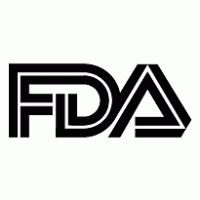FDA and USP Class VI O-Rings
Mar 3, 2020
 There are two important organisations that play a key role in the regulation of elastomers and O-rings, these being the United States Pharmacopeia (USP) and the US Food and Drug Administration (FDA) as well as meeting European regulation EU1935. Any company wishing to produce USP Class O-rings for any kind of food and beverage, medical, pharmaceutical or other health care application must adhere to the strict rules and regulations set by these two organisations. There are several classes of USP, class VI being the highest grade and suitable for implantation in the human body with a test temperature of 121°C. The USP is a non-government organisation and is mainly concerned with pharmaceutical and bio-technology industries, and in order to adhere to these standards set by the organisation all O-rings must be extensively tested and assessed to ensure that they meet all expectations. The compliance by way of test report from a certified body confirming adherence to these standards is often requested by the companies or projects for which the O-rings are being manufactured.
There are two important organisations that play a key role in the regulation of elastomers and O-rings, these being the United States Pharmacopeia (USP) and the US Food and Drug Administration (FDA) as well as meeting European regulation EU1935. Any company wishing to produce USP Class O-rings for any kind of food and beverage, medical, pharmaceutical or other health care application must adhere to the strict rules and regulations set by these two organisations. There are several classes of USP, class VI being the highest grade and suitable for implantation in the human body with a test temperature of 121°C. The USP is a non-government organisation and is mainly concerned with pharmaceutical and bio-technology industries, and in order to adhere to these standards set by the organisation all O-rings must be extensively tested and assessed to ensure that they meet all expectations. The compliance by way of test report from a certified body confirming adherence to these standards is often requested by the companies or projects for which the O-rings are being manufactured.
There are two types of tests used by the USP for class VI O-rings, and these apply to all elastomers, plastics and polymeric materials. These tests are the in vitro testing procedure and the in vivo testing procedure. Some end-users may also require that the O-rings be free from animal derived ingredients (ADI free).
One key area where rigorous testing is required is the water processing industry. This is where an element of importance is placed upon the material’s resistance to bacterial build up rather than temperature or pressure, and cleanliness becomes a determining factor. The materials used for valves, pumps and other pieces of equipment must all have the ability to withstand a wide range of media, and they must also be able to endure rigorous cleaning and sterilising processes too.
The pharmaceutical and food industries also require their own set of strict standards to be adhered to, as these types of products are usually produced on large scales for mass consumption. With such a large scale of production, it is essential that every part of the processing equipment is able to not only withstand harsh conditions, but also must be resistant to bacterial build up and be able to cope with extensive and regular cleaning in order to maintain a high level of hygiene within the entire system. By adhering to the standards of the USP and the FDA, Class VI O-rings are much better suited for use in these industries for both the continued efficient operation of the plant and for the safety of the consumer or user of the products that are being made.
Overall, the importance of the standards imposed by the USP and the FDA cannot be overstated, and with such a large focus on health and safety it is essential that all class VI O-rings do adhere to these standards in order to be valid for use in a wide range of applications. Regardless of the industry or where the class VI O-Rings are used, there is always the safety implications that must be considered. Therefore, these standards form a crucial aspect of the entire process and procedures when it comes to using FDA and USP Class VI O-Rings.
